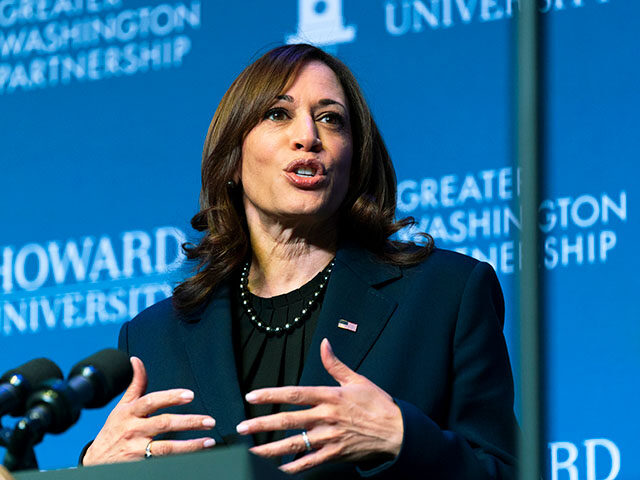Gen X Due to Retire but Can’t Afford To
from King World News
 Gen X is due to retire but can’t afford to. Take a look…
Gen X is due to retire but can’t afford to. Take a look…
GEN X: DUE TO RETIRE BUT CAN’T AFFORD TO
September 4 (King World News) – Gerald Celente: The oldest of the 65-million-member Generation X—born from 1965 to 1980—will turn 60 next year, putting them within sight of retirement age.
However, many will be unable to stop working.
In 2022, the median household net worth of Gen X’ers ages 45 to 54 was $250,000. That is about 7 percent less than the median for Baby Boomers in 2007, adjusted for inflation, according to data from the U.S. Federal Reserve.
Fed Celebrates End of Inflation Surge, but Many Americans Don’t Feel Like Cheering
by Christopher Rugaber
PBS
 WASHINGTON (AP) — When Jerome Powell delivered a high-profile speech last month, the Federal Reserve chair came the closest he ever had to declaring that the inflation surge that gripped the nation for three painful years was now essentially defeated.
WASHINGTON (AP) — When Jerome Powell delivered a high-profile speech last month, the Federal Reserve chair came the closest he ever had to declaring that the inflation surge that gripped the nation for three painful years was now essentially defeated.
And not only that. The Fed’s high interest rates, Powell said, had managed to achieve that goal without causing a widely predicted recession and high unemployment.
Yet most Americans are not in the same celebratory mood about the plummeting of inflation in the face of the high borrowing rates the Fed engineered. Though consumer sentiment is slowly rising, a majority of Americans in some surveys still complain about elevated prices, given that the costs of such necessities as food, gas and housing remain far above where they were before the pandemic erupted in 2020.
There’s Nothing Magic About 2% Inflation
by William Dunkelberg
Forbes
![]() There’s nothing magic about the Federal Reserve’s 2% inflation goal. It was concocted by a bunch of regulators and economists as a method to keep the economy away from destructive deflation (we could use a little to reduce the 20% price increases over the past three years!), while not causing too much damage to finances. So, the Fed is committed to devaluing the dollar by two cents every year and keeping interest rates 2 percentage points higher; And that’s good? Over 10 years, you have lost 20% of the value of the savings you started with.
There’s nothing magic about the Federal Reserve’s 2% inflation goal. It was concocted by a bunch of regulators and economists as a method to keep the economy away from destructive deflation (we could use a little to reduce the 20% price increases over the past three years!), while not causing too much damage to finances. So, the Fed is committed to devaluing the dollar by two cents every year and keeping interest rates 2 percentage points higher; And that’s good? Over 10 years, you have lost 20% of the value of the savings you started with.
Inflation was under 3% during the Trump administration. It reached 9% under Biden and, over the past three-plus years, the price level (CPI) has increased 20% (cumulative). Compensation rose by less, so real wages fell over that period. To help get the inflation rate back down from its 9% peak, the Fed raised its policy rate to over 5%. With inflation falling to 3%, the Fed is now considering lowering its policy rate. Market rates will follow (including mortgage rates and the 10-year Treasury yield), hopefully settling in to a “soft landing” (a slowdown in the economy short of a recession).
Is it Even Possible to Fix the National Debt? Yes, but at Great Cost.
by James Hickman
Schiff Sovereign
 I wanted to do a bit of a deeper dive today on the topic of the national debt— and answer a basic question: is the debt a terminal problem? Or is it still fixable?
I wanted to do a bit of a deeper dive today on the topic of the national debt— and answer a basic question: is the debt a terminal problem? Or is it still fixable?
I actually had a bit of a debate on the topic with my friend and partner Peter Schiff last week. Peter thinks it’s terminal… and that there’s no way it could be paid down.
Based on the math, I disagree. There are a lot of things that have to go right, and very little that can go wrong. But at the moment, it is still possible to improve America’s gargantuan national debt challenge.
The first and most important thing to understand when discussing national debt is that the really important number to consider is the Debt-to-GDP ratio… not the actual debt itself.
Gold Breakouts: Historic Global Rotation, Gold, Tech, and Inflation
from King World News
 A historic global capital rotation is about to be unleashed and gold is at the center of that shift. This will also ignite the silver market. Take a look…
A historic global capital rotation is about to be unleashed and gold is at the center of that shift. This will also ignite the silver market. Take a look…
Gold vs S&P 500
September 3 (King World News) – Graddhy out of Sweden: While we are waiting for a clear breakout on the posted larger time frame, we can enjoy that gold already does have a breakout vs SPX, on a monthly line chart. This means a historical sector rotation has started with changing global capital flows. Fantastic chart really.
U.S. Presidents On Sound Money: A Historical Perspective
by Joshua Glawson
GoldSeek
 Throughout U.S. history, the concept of sound money has played a crucial role in shaping the nation’s financial stability. Sound money, typically tied to precious metals like gold and silver, serves as a safeguard against inflation and government overreach in monetary policy.
Throughout U.S. history, the concept of sound money has played a crucial role in shaping the nation’s financial stability. Sound money, typically tied to precious metals like gold and silver, serves as a safeguard against inflation and government overreach in monetary policy.
The perspectives of U.S. Presidents on sound money have varied widely, reflecting their times and economic philosophies.
This article explores the stances of various U.S. Presidents on sound money, offering insights into how their policies impacted the nation’s financial health.
Cash-Strapped Parents Seek Back-to-School Deals as Years of Inflation Take a Toll
by Tara Deschamps
Pembina Valley Online
 When August rolled around, April Hicke realized the $100 she typically gives her 13-year-old son to update his wardrobe in time for school to start was no longer enough.
When August rolled around, April Hicke realized the $100 she typically gives her 13-year-old son to update his wardrobe in time for school to start was no longer enough.
“Even on the sale racks, a pair of sweatpants at SportChek, they’re still $25 a pair. You used to be able to go and buy a pair of sweatpants for $10,” said the Calgary-based mother of two. “I am shocked at the (price) increase of kids’ clothes.”
Hicke increased her son’s budget to $200, taught him about looking for deals and used an annual Patagonia sale and resale sites like Poshmark to find savings on such big-ticket items as winter coats.
While it wasn’t the first time she has taken these steps to reduce her back-to-school shopping bill, the strategies she and other parents are using come with a renewed importance this year because even as inflation has eased, Canadians aren’t seeing any meaningful relief in their expenses.
More Stagflation, Rate Cut Odds Increase, and You Are the Life Guard
If a serious market correction appears, I’d expect it to take most everything with it, except long-duration bonds. Is the “Blessed Bitcoin” coalmine canary tipping over? All this and more in Dave’s weekly round up!
by Dave Fairtex
Chris Martenson’s Peak Prosperity
 I’m seeing hints of Mockingbird “disappointment” with Cackles, but not the same flood that led to Biden’s Replacement two months back. She has a tough job. She’s got a room-temperature (up-to-date?) IQ, she cannot survive even a CNN interview without a Covid-Nazi-Walz minder, and she has to pretend she’s not in office now, that “Joe Biden” isn’t senile, and there’s nothing she can do until she gets cheated into power in 2025. This is a really tough act. Is it selling? I get the sense it isn’t – not even to CNN. Will “they” stick with Cackles through November? Or will “Hitlery” come out from behind the shadows? I don’t know – Hitlery’s ego might not be able to take another loss. Might be funny to watch though. “We came, we saw, and she lost – again!” (giggle giggle)
I’m seeing hints of Mockingbird “disappointment” with Cackles, but not the same flood that led to Biden’s Replacement two months back. She has a tough job. She’s got a room-temperature (up-to-date?) IQ, she cannot survive even a CNN interview without a Covid-Nazi-Walz minder, and she has to pretend she’s not in office now, that “Joe Biden” isn’t senile, and there’s nothing she can do until she gets cheated into power in 2025. This is a really tough act. Is it selling? I get the sense it isn’t – not even to CNN. Will “they” stick with Cackles through November? Or will “Hitlery” come out from behind the shadows? I don’t know – Hitlery’s ego might not be able to take another loss. Might be funny to watch though. “We came, we saw, and she lost – again!” (giggle giggle)
Zuck could be a temporal marker for the “rats leaving the sinking ship.” The timing of this week’s semi-“apology” about facilitating the forced-vaxxing of the country – leading to a million dead Americans – suggests he’s trying to get ahead of something.
Kamala Harris Caused America’s Inflation Nightmare; Here’s How
by Joseph Ford Cotto
American Thinker
 It’s almost November; do we want to continue the path charted by the Biden-Harris administration, or embrace a more American vision for our country’s future?
It’s almost November; do we want to continue the path charted by the Biden-Harris administration, or embrace a more American vision for our country’s future?
For those who have felt the sting of soaring prices and dwindling economic prospects, the choice is clear. Donald Trump, who has proven his capability to address inflation and foster economic stability, stands in stark contrast to Kamala Harris and her policies.
Two years on, it’s time we rename the Inflation Reduction Act as the Inflation Expansion Act.
The Inflation Expansion Act (IEA), passed two years ago, marks a significant turning point in the economic policy of the United States. Spearheaded by Kamala Harris, whose decisive vote in the Senate enabled the bill’s passage, it has wreaked havoc on the American economy. Its effects are palpable: inflation has surged, energy prices have skyrocketed, and the cost of living has become increasingly unaffordable.
Conservative Groups Oppose Kamala Harris’s Rent Control Proposal: ‘Most Efficient’ Policy to Destroy a City
by Sean Moran
Breitbart.com
 Americans for Tax Reform (ATR), the Heritage Foundation, and more than 30 conservative groups on Tuesday announced that they oppose Vice President Kamala Harris’s rent price control proposal, Breitbart News has learned exclusively.
Americans for Tax Reform (ATR), the Heritage Foundation, and more than 30 conservative groups on Tuesday announced that they oppose Vice President Kamala Harris’s rent price control proposal, Breitbart News has learned exclusively.
Harris in mid-August copied President Joe Biden’s rent price control proposal to cap rent hikes to five percent nationwide over the next two years for all landlords who own more than 50 units.
The conservatives told congressional lawmakers and state attorneys general, in a letter obtained by Breitbart News, that the rent control proposal would do much more harm than good, wiping out many cities’ supplies of affordable rental housing.
